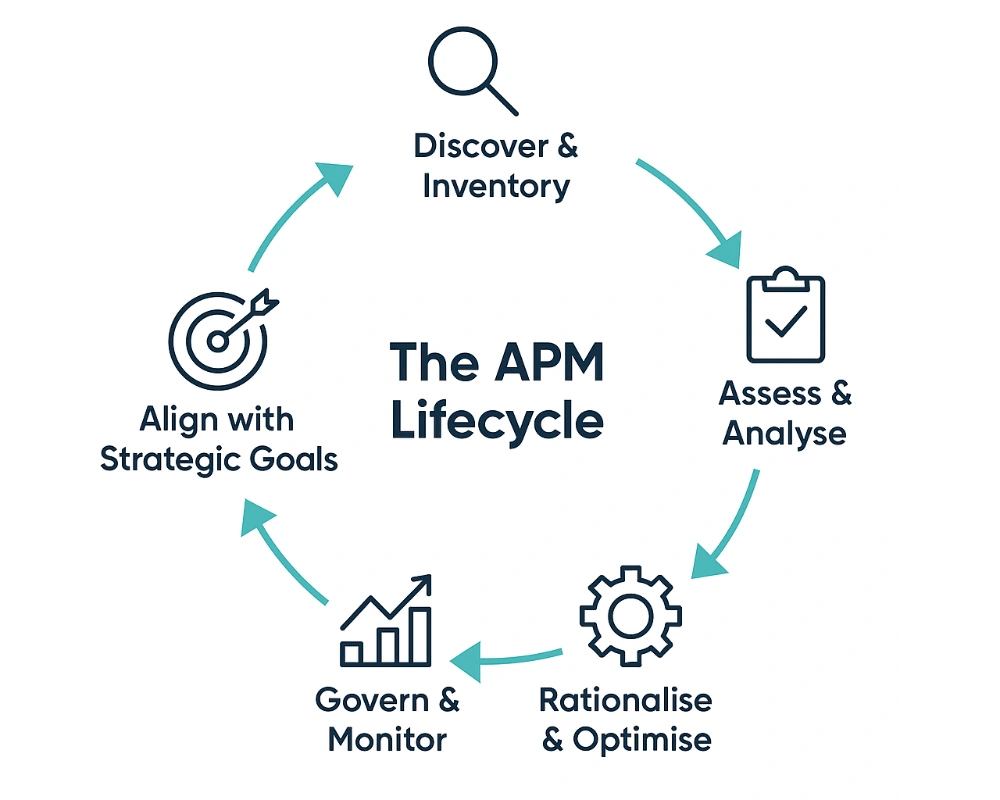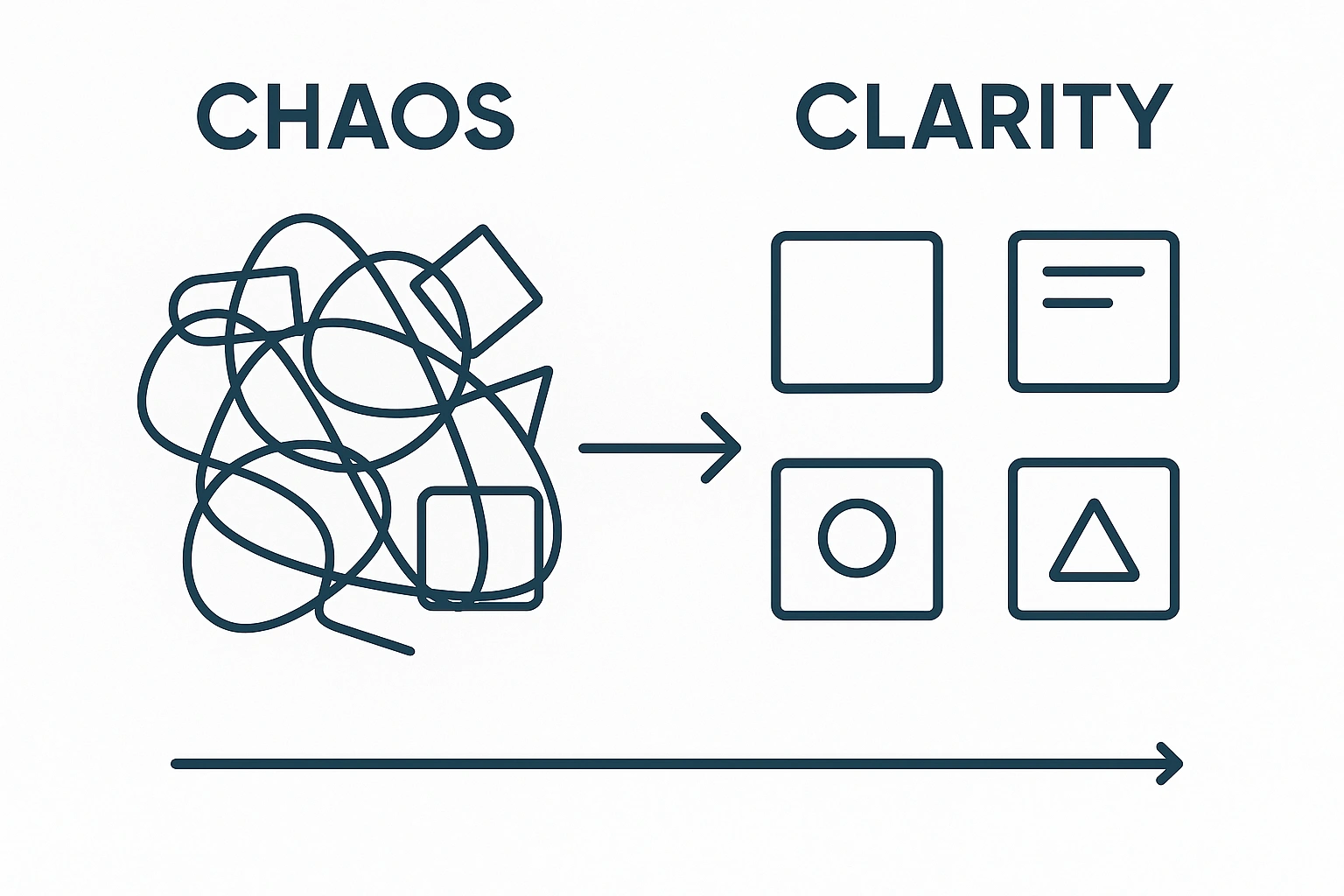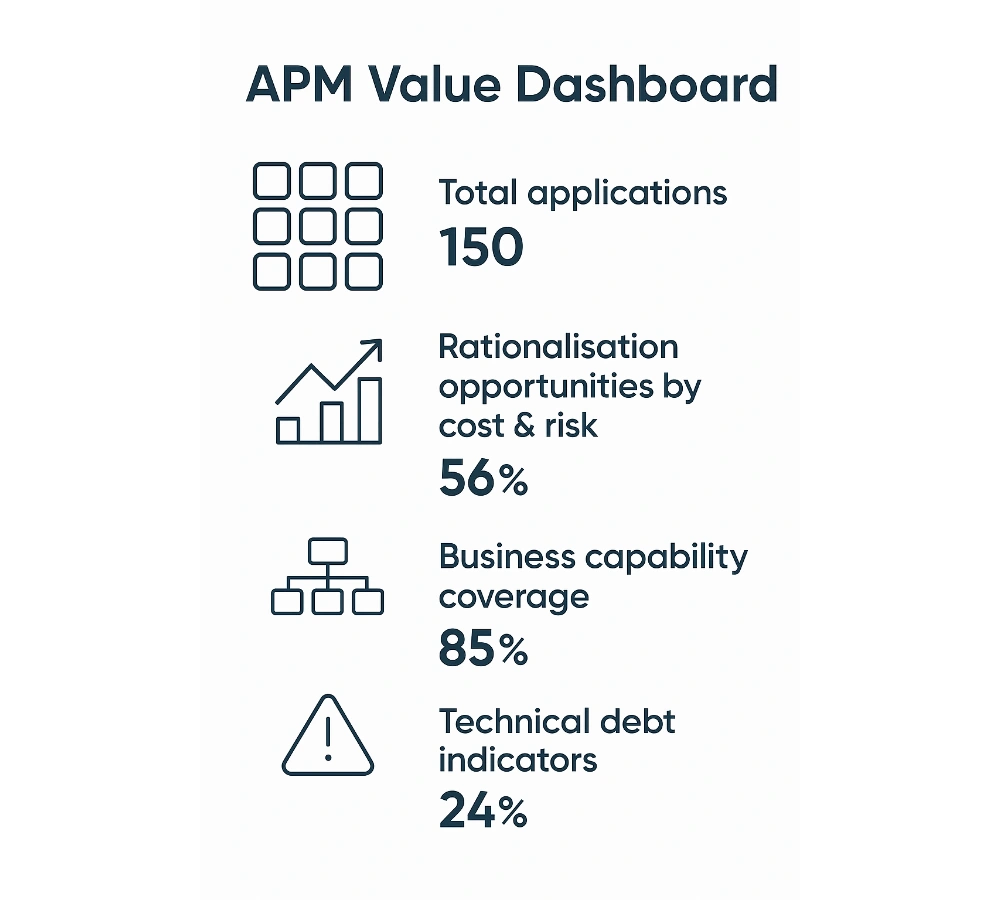
What is Application Portfolio Management (APM) and Why Does It Matter?
In today’s digital landscape, businesses rely on a sprawling web of applications to operate, innovate, and compete. Yet, as portfolios grow, so do complexity, costs, and risks.
Application Portfolio Management (APM) gives organisations a structured, data-driven way to understand, optimise, and govern their application ecosystem—ensuring every application supports strategic business goals.
The Problem: Unchecked Application Sprawl
Without APM, organisations often face:
- Redundant applications that duplicate functionality.
- Underutilised software consuming resources.
- Obsolete legacy systems introducing technical debt and security risks.
- Opaque ownership and accountability gaps.
Over time, this erodes agility, bloats IT spend, and hinders digital transformation efforts.
📊 Did you know? Gartner estimates that organisations can cut application costs by up to 30% through effective application rationalisation.
What is Application Portfolio Management?
At its core, APM is about managing applications as strategic assets. It involves:
- Cataloguing applications in a central inventory.
- Assessing each application’s value, cost, risk, and technical health.
- Optimising the portfolio by investing in high-value apps and retiring redundant or low-value ones.
- Aligning the portfolio with business capabilities and strategic objectives.
Unlike ad-hoc cleanups, APM is a continuous discipline embedded in IT governance and business planning.
Key Goals of APM
| Goal | What it Achieves |
|---|---|
| Reduce Complexity | Simplifies IT landscapes by rationalising applications. |
| Optimise Costs | Identifies savings opportunities through consolidation. |
| Improve Agility | Enables faster response to business needs with a leaner portfolio. |
| Enhance Visibility & Control | Establishes clear ownership and governance. |
| Align IT & Business Strategy | Ensures application investments support business goals. |
The APM Lifecycle: How It Works
APM isn’t a one-time exercise. It’s a cyclical process that matures over time:
- Discover & Inventory
- Assess & Analyse
- Rationalise & Optimise
- Govern & Monitor
- Align with Strategic Goals

APM in Practice: Benefits Beyond IT
For CIOs & IT Leaders
- Gain a strategic view of IT assets.
- Drive cost transparency and optimisation.
- Reduce technical debt and modernise legacy systems.
For Business Leaders
- Ensure IT investments align with business priorities.
- Increase agility for digital initiatives.
- Mitigate risks from outdated or insecure applications.
For Enterprise Architects
- Simplify architecture landscapes.
- Support capability-driven planning.
- Provide data-driven insights for decision-making.
Common APM Challenges (And How to Overcome Them)
| Challenge | Solution |
|---|---|
| Incomplete or inaccurate application data | Automate discovery and integrate with CMDBs and asset tools. |
| Lack of stakeholder engagement | Involve business units early and tie APM to business outcomes. |
| Resistance to application rationalisation | Frame changes in terms of business value and strategic fit. |
| Treating APM as a one-off project | Embed APM into ongoing governance and portfolio management. |

A visual comparing a cluttered, redundant application landscape with a streamlined, business-aligned portfolio.
Choosing the Right APM Tools
Modern APM requires more than spreadsheets. Leading organisations leverage specialised tools to gain strategic insights and drive portfolio optimisation.
EA Platform vs Traditional IT Management Tools
When evaluating APM solutions, organisations often need to choose between Enterprise Architecture (EA) Platforms and traditional IT management tools like Configuration Management Databases (CMDBs). While CMDBs excel at operational asset tracking, EA Platforms provide the strategic context needed for effective Application Portfolio Management.
Learn more about the key differences between EA Platforms and CMDBs for Application Portfolio Management to understand which approach best fits your organisation’s needs.
Leading APM solutions include:
EA Platforms
- Colloquial - Modern, user-friendly APM focus
- LeanIX - Enterprise-scale with strong analytics
- Ardoq - Data-driven architecture management
- Bizzdesign - TOGAF-aligned methodology
CMDB Solutions
- ServiceNow - Market leader with ITSM integration
- BMC Helix - Traditional enterprise CMDB
- Lansweeper - Asset discovery focused

Mockup showing metrics such as:
- Total applications
- Rationalisation opportunities by cost & risk
- Business capability coverage
- Technical debt indicators
Getting Started with APM: Quick Wins
- Focus on high-cost or high-risk applications.
- Build an MVP inventory.
- Establish simple assessment criteria.
- Communicate early wins to build momentum.
- Integrate APM into governance cadences.
Final Thoughts: APM is Strategic, Not Just Operational
Application Portfolio Management is no longer a nice-to-have. It’s a strategic enabler for digital transformation, cost optimisation, and enterprise agility.
For Heads of Architecture and CIOs, APM provides the visibility and control needed to align technology with business ambitions—turning application chaos into competitive advantage.